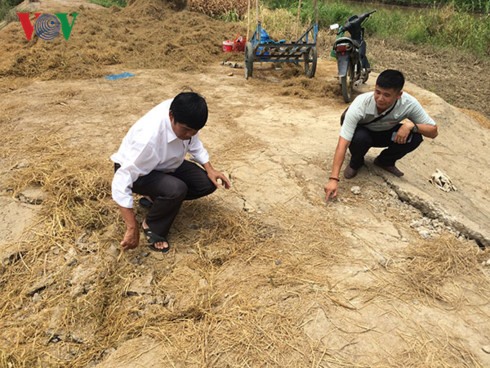 Society
Society

Many sections of Quảng Điền dyke, worth VNĐ312 billion ($13.7 million), in Central Highlands Đắk Lắk Province’s Krông Ana were severely damaged after a flood hit the locality late May.
 |
| Local residents have to use straw to cover a damaged spot of the dyke to easily transport. —Photo vov.vn |
HÀ NỘI — Many sections of Quảng Điền dyke, worth VNĐ312 billion ($13.7 million), in Central Highlands Đắk Lắk Province’s Krông Ana were severely damaged after a flood hit the locality late May.
The concrete covering the 1-km stretch from pump station T21 to pump station T22 was sloughed and several holes having diametres ranging from 30cm to 40cm have appeared on this section. In the next 1-km section, the dyke was severely eroded, the Voice of Việt Nam online newspaper reported.
Lê Văn Sơn, a local resident said, he suspected the quality of the dyke was poor.
“The proportion of sand and stone used to build the dyke was probably higher than the proportion of cement, so the dyke was vulnerable to the flood,” he said.
Sơn said he worried that another flood would totally destroy the dyke.
Y Hương Niê, vice chairman of the provincial People’s Committee, said the dyke’s erosion was triggered by the prolonged flood that lasted nearly a month late last year.
Another prolonged flood early this year exacerbated the situation, he said.
Data from the provincial Agriculture and Rural Development showed that erosion had occurred at 30 places due to the flood last November, including 20 spots that had suffered from severe erosion.
The department said it had consulted the committee to fix the situation before the rainy season this year.
Mai Trọng Dũng, deputy head of the agricultural department, said that in the short term, the provincial administration had started repairing the most damaged sections of the dyke.
In the long term, the department has submitted to the People’s Committee of the district the requirement for more funds to fix the situation soon, he said.
The dyke, which started construction in 2009 and became operational in 2014, was designed to protect over 3,000ha of crop and transport infrastructure in the locality. — VNS




